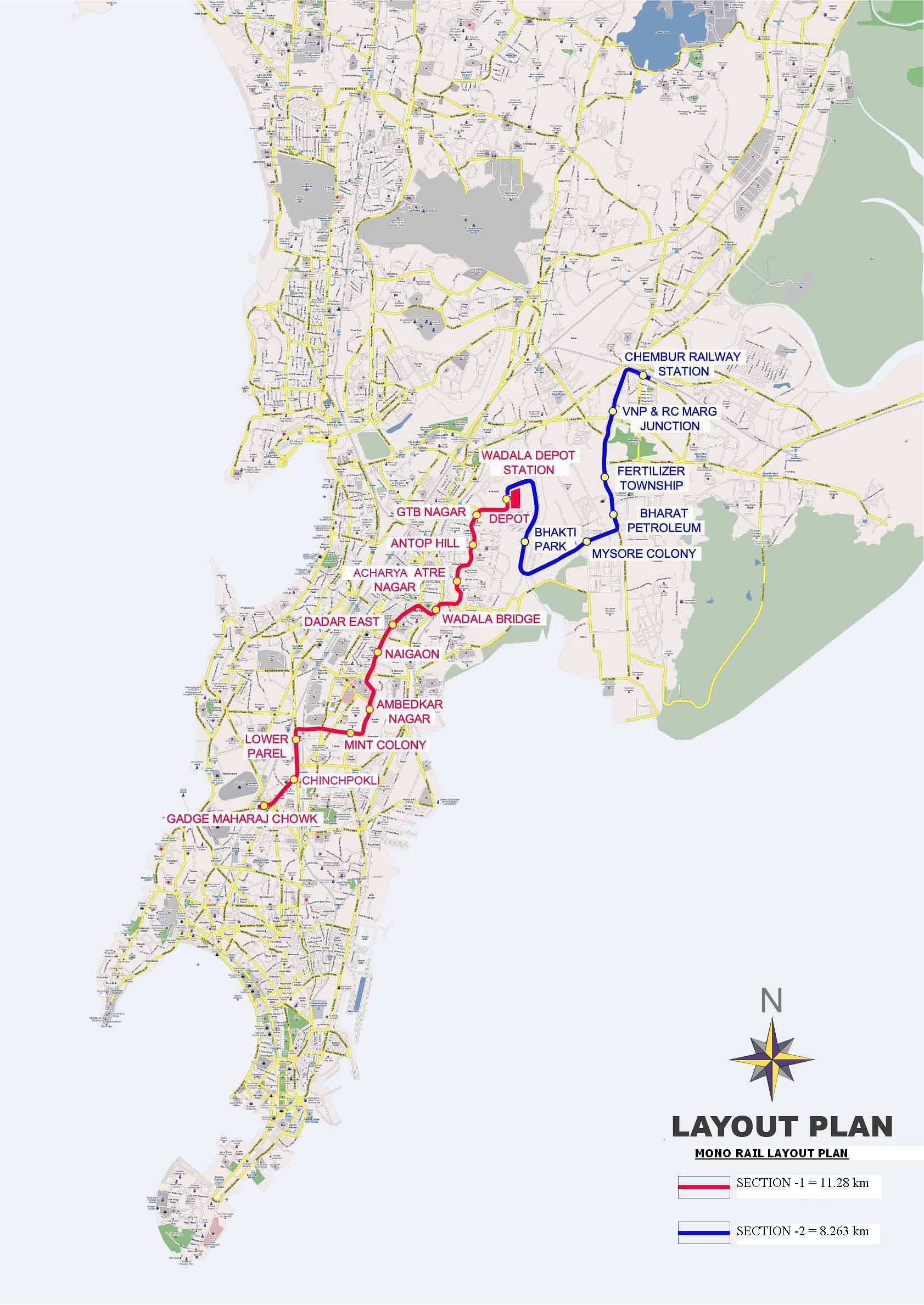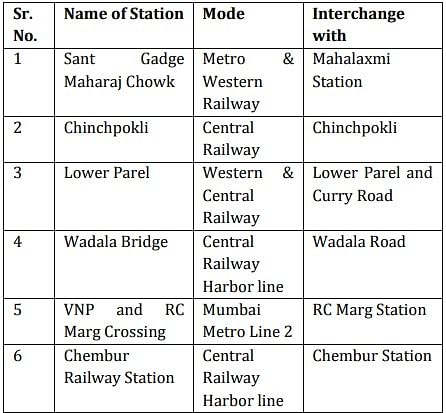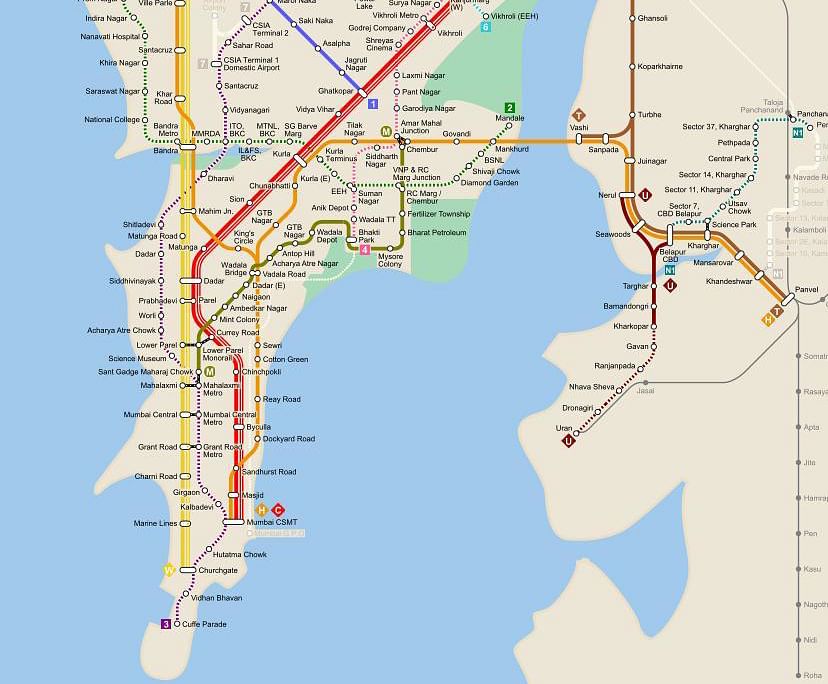The ongoing efforts to establish interconnectivity with the metro and suburban rail networks of the city are expected to further enhance the service in the future.
Despite experiencing a significant decline in ridership due to hurdles of inefficient planning, poor service and technical difficulties since its launch in 2014, the Mumbai Monorail service is now showing signs of improvement.
As per an Indian Express report, in the financial year 2022-23, a total of 36.36 lakh commuters have used the service, which is recorded to be the highest in the last six years.
Although the current number is far from the passenger counts that were recorded during its launch — 61.66 lakh in 2015-16 — it indicates that the monorail service is gradually gaining momentum.
The recent increase in passenger count can be attributed to the improved efficiency and increased number of rakes that have been deployed on the monorail route.
The decision made by the Mumbai Metropolitan Region Development Authority (MMRDA) to take over the operations of the monorail service in 2019 has led to a noticeable improvement in its service.
Additionally, the ongoing efforts to establish interconnectivity with the metro and suburban rail networks of the city are expected to further enhance the service in the future.
The Mumbai Monorail
The Mumbai Monorail is India’s first monorail system. The construction for the system began in 2009 and the network spans 19 km which runs from Chembur-Wadala to Sant Gadge Maharaj Chowk in Mumbai Central.
The first operational line — 8.3 km long between Wadala Depot and Chembur and built at a cost of over Rs 2,000 crore, was opened in 2014.
Monorail differs from elevated metro, as the train moves on a single rail, beam, or tube.
The straddle-type monorail design — as the train runs on a steel or reinforced concrete beam — was adopted for development in Mumbai.
The elevated network was conceived as a viable alternative public transportation system that could navigate through some of the most congested and densely populated areas of Mumbai.
This lightweight transportation system is better equipped to handle sharp curves and navigate steep inclines and declines with ease.
The authorities envisioned the infrastructure to counter the land scarcity issues in the city and support the existing public transit systems — while addressing challenges associated with overcrowding on suburban rail lines and the bus services in cramped and narrow areas.
However, the first phase of the monorail received severe setbacks in the three years of its operations. Technical snags and low ridership numbers plagued the service, with power failures, machinery dysfunctions, and tyre bursts.
In November 2017, a fire damaged several coaches of an empty train during a test run and the service remained shut for a period of 10 months.
The services subsequently resumed in September 2018, but continued to see less ridership, following reduced frequency (about 30 to 40 minutes) of trains and lack of last-mile connectivity at several stations along the monorail route.
The Network’s Progress
In March 2019, the second phase of the Chembur-Wadala-Jacob Circle monorail network was also opened. With this, the entire 19.54 km route of the country’s first monorail system became functional.

An official involved in the running of the monorail stated, “Commuters want to have stable services. If trains are available at constant frequency commuters can plan their travel and we are able to provide the services at a time gap of 18 minutes now, which was earlier running at a 30-minute time gap with no proper punctuality. However, now the case is different and therefore the ridership has improved.”
In addition to the gradual increase in the ridership, the MMRDA has plans to deploy additional 10 rakes which will be provided by the Medha Servo Drives Limited based in Hyderabad.
The inclusion of new rakes is expected to improve the frequency of trains from 18 minutes to five minutes, and nearly double the number of services to 250 each day.
In addition, the monorail authority has proposed foot over bridges (FOB) connecting the upcoming metro and existing railway stations to create an integrated transit network.
With this multi-modal integration plan, the daily ridership is expected to be over 1.5 lakh daily in the next three years.
Multi-Modal Interconnectivity With Monorail
Cities around the world are recognising the importance of integrating various modes of public transportation to create a multimodal transit network.
Similarly, in Mumbai, an integrated mass transit system consisting of the monorail, suburban railways, metro networks, and last mile connectivity acts crucial for the increased use of public transportation services.
These segments are envisioned to work together to improve the efficiency of the city’s transportation network.
According to a study published in the International Research Journal of Engineering and Technology (IRJET), the Mumbai Monorail system carries several advantages and is ideal as a feeder for a mass rapid transit system (MRTS), such as the metro and suburban railway.
The Mumbai Monorail has been developed to connect several areas of the city that are not served by the suburban rail system or the Metro rail.
The interconnections include — Wadala, Curry Road and Chembur, which serves as monorail’s connections to the suburban rail network.

For interconnections with the city’s emerging metro network, the authority has planned Metro Line-4, which will run between Wadala and Kasarvadavali, to integrate with the monorail station at Bhakti Park.
This will be done through a 215m FOB, and will provide connectivity to densely populated areas of central Mumbai — including Dadar, Lower Parel and Chinchpokli.
Similarly, a 300 m bridge is planned at Jacob Circle Monorail Station to connect with Colaba-Seepz Metro Line-3 and the suburban railway station.
This will improve the connectivity to Mahalaxmi-Parel-Wadala areas.
SVR Srinivas, Metropolitan Commissioner of the MMRDA, said “We are planning to extend the Monorail route by around 450 to 500 m and connect it with the Mahalaxmi Metro station. This will make the Monorail more viable considering it is in loss now, and also give commuters the option to travel from south Mumbai travel up to Chembur seamlessly via the interchange at Mahalaxmi Metro station.”
Additionally, other linkages includes the monorail’s V N Purav Station, which stands close to the V N Purav Station on Metro Line 2B, while monorail’s Wadala Bridge station is in close proximity to the existing Vadala Road Western Railway Station.



